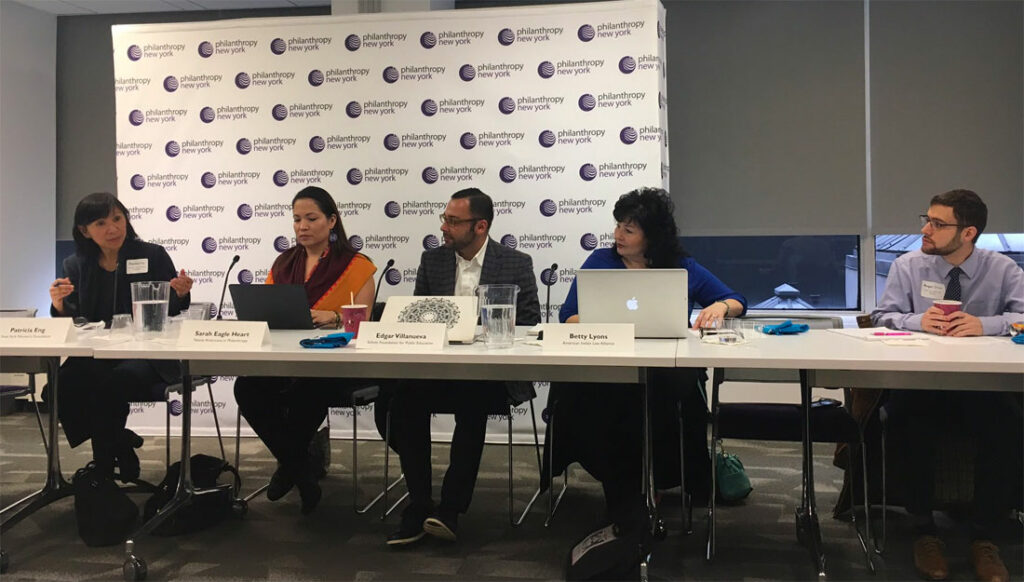Blog
Invisible No More: Native Realities in a Post-Election Era

Less than 0.3% of philanthropic dollars go to Native groups. This fact was pointed out at Philanthropy New York’s event, “Invisible No More: Native Realities in a Post-Election Era”, by Schott Foundation Vice President of Programs and Advocacy Edgar Villanueva. Alongside Edgar were Native Americans in Philanthropy CEO Sarah Eagle Heart, American Indian Law Alliance President and Executive Director Betty Lyons, and moderator Patricia Eng, who is Vice President of Strategic Partnerships at The New York Women’s Foundation. The panelists discussed concerns of and hopes for philanthropy’s engagement with Native partners. Each panelist identified gaps in support for Indigenous communities but emphasized that these issues affect us all: the planet that the Native community is fighting to protect is a shared responsibility for all of us, and we must collaborate with others to save it.
Sarah described the loss of land, culture and language that many Native people experienced, and are still experiencing. The manifest destiny ideology adopted in the 1800s reassured white settlers that it was their destiny to colonize the lands that once belonged to Native communities. The placement of Native youth in boarding schools were created to “kill the Indian, save the man”, by training youth to reject their language and culture – a culture-robbing process that continued until the late 1970s. These facts are largely ignored today by the masses, but Sarah envisions a time in which these truths become common sense. Sarah sees our current political climate as an opportunity – now other groups are experiencing what Native communities have been experiencing for hundreds of years, and it is crucial for these groups to collaborate.
Schott’s Edgar Villanueva further emphasized the necessity for collaboration, saying, “what’s at stake is all of our futures.” Like many of us, Edgar expressed the admiration for youth who are willing to put everything on the line and be on the frontlines of fights, as we have seen at Standing Rock. We also must be cognizant of protecting those youth, especially now when public education is becoming more and more privatized. Edgar discussed the rising privatization of the public education system in the U.S., warning that making our children a commodity is not healthy and doesn’t work in the long-term, and that the public education system is one of our last strands of democracy. Edgar explained the potential for a reciprocal relationship between Native communities and philanthropies that hasn’t existed before. Historical traumas experienced by Native communities have created a sense of mistrust when it comes to accepting a helping hand from those who say they are there to help. It takes the extra step to seek out Native-led organizations that will benefit from philanthropies’ services, and in turn the philanthropy world has a lot to learn from Native communities.
Betty also described the historical mistrust of the government by Native communities. Betty’s tribe is federally-recognized and is not dependent on any federal funds to support its community. She described the trans-generational losses that Native communities have experienced, saying “they stole a lot of things from us, but they didn’t steal how we treat women, or how we treat mother earth.” She urges innovation in advocacy, leading by example by explaining a scenario in which she got creative about how to treat a fracking case her organization took to court.
The testimonies from all of the panelists brought to light both the struggles that the Native community has endured thus far as well as a sense of urgency and willingness to collaborate with all who want to work together moving forward.


